WordPress is a fantastic platform for website development and creating an ecommerce store but it isn’t for everyone. Some people may start on WordPress only to find that it’s too complex or doesn’t quite have the features and utility they require.
Oftentimes Shopify is the preferred alternative due to its simplicity and user-friendly nature. This begs the question, how do I switch from WordPress to Shopify and is it even possible if your online store is already up and running? I take a look at WordPress to Shopify migration below including how to plan for it, and the considerations you must make.
Preparing for Migration: Planning and Assessment
Planning is integral to a seamless WordPress to Shopify migration and it’s not something you can go into blindly. Indeed, it’s one of the SEO services for Shopify stores you could look for if you feel that the migration is something you can’t complete on your own.
What data has to be moved?
The first thing you must do is compile a list of all the website data that has to be moved and this usually includes:
- Website content.
- Product data.
- Customer data.
- Text and image formatting.
- Order histories.
Be thorough with this and make sure that nothing is left out! You don’t want to launch your Shopify store with half the data missing.
How do you intend to move the data?
The WordPress to Shopify migration process involves the transferal of a heap of data and this can be incredibly complex. Typically, there are three ways to move data:
- Copy and paste.
- Use CSV files.
- Use a Shopify migration app.
Copying and pasting is the simplest way but it is long-winded and prone to human error. I only recommend this for copying actual website content such as text on your About page.
CSV files work great and Shopify supports these – they allow you to easily transfer important database data such as customer info and product info.
If you want the easiest route, there is a range of Shopify migration apps that essentially automate the process with minimum input.
What happens during the transition period?
You have to consider the actual point of migration and what happens during this period. You have two options – take the WordPress version of your store offline completely and set a definitive shutdown date, or continue to run the WordPress store until your Shopify version is online.
Both approaches have potential issues. For example, if you shutdown the WordPress store completely, you lose custom and it could negatively impact your SEO. Similarly, keeping the WordPress store running could confuse and cause problems with fulfilling orders, etc.
Considerations for a Seamless Shopify Migration
Before migrating, you must consider how Shopify works, the SEO options it has, and its suitability for your business. There are other considerations too such as the store theme, initial setup, and migration methods.
The impact on SEO
You can look at a detailed SEO comparison explained here for WordPress and Shopify but you have to consider this before migrating.
For example, does Shopify support the same SEO plugins you were using on WordPress? Can you optimize your store pages to the same degree that you could on WordPress?
How will the migration itself affect SEO in terms of changing website URLs and your link structure? These are all factors that could initial dampen your SEO progress so you have to be prepared to deal with the backlash or put measures in place to make sure the SEO is impacted as little as possible.
Choosing the right Shopify theme
The underlying Shopify theme is highly important and forms the foundation of your ecommerce store. Make sure that you research themes extensively beforehand and don’t simply pick one slightly before the migration.
Ideally, the theme should be lightweight with quick loading times and neat HTML and CSS code. Additionally, it must be mobile responsive and able to work seamlessly on mobile devices.
Choosing the right migration method
As discussed above, there are several migration methods depending on the type of data. For example, website copy can simply be copied and pasted into the relevant pages on Shopify – i.e. you could just copy the text from your About page. You may need to sort the formatting again, but this should be fine providing you only copy the text and not its formatting too.
Other info like customer data and product info is more complex as it’s usually stored in databases and this is where either CSV files or using a migration app helps.
Setting up your Shopify store
Before you can migrate any data, your Shopify store has to be set up. This includes basic things like account registration and creating the basic hierarchy of your store with different website pages.
For this, you most likely need to copy images and other media such as your business logo and product images. Essentially, you have to make sure the website is in a “ready-to-go” state i.e. it is fully configured and has a range of blank pages that have to be populated with your migrated data from WordPress.
WordPress to Shopify Migration is Possible but Care Must be Taken
So, WordPress to Shopify migration is possible but it’s not always an easy task depending on the size of your online store and the complexity of things like your customer data. Luckily, there is an array of migration tools available and Shopify has some features that allow you to transfer data.
The key is to plan extensively beforehand, including what happens to the live website during the transition period. You must also make sure your Shopify store is set up properly and that it is ready to accept the data from WordPress.










